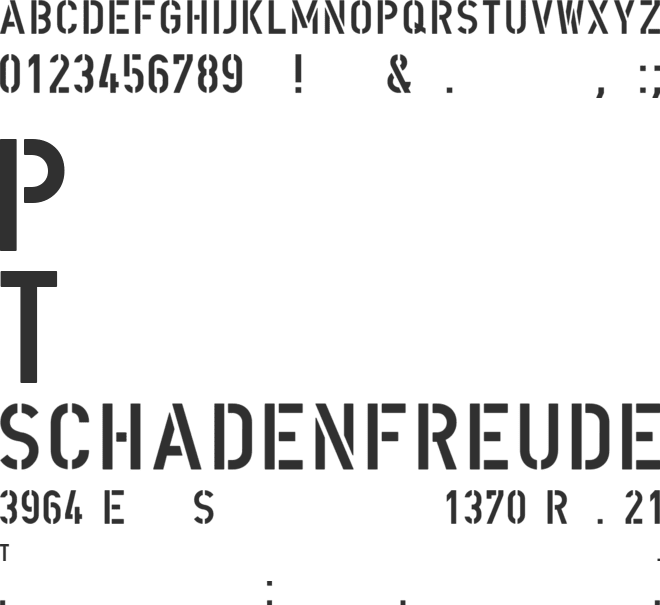

There are many subtle differences in DIN Next's letters when compared with DIN 1451 original.

The digital version of DIN 1451 would go on to be adopted and used by designers in other countries as well, solidifying its worldwide design reputation. Nevertheless, because DIN 1451 was seen all over Germany on signs for town names and traffic directions, it became familiar enough to make its way onto the palettes of graphic designers and advertising art directors.

They did not intend for the design to be used for advertisements and other artistically oriented purposes. The committee wanted a sans serif, thinking it would be more legible, straightforward, and easy to reproduce. The design was to be used on German street signs and house numbers. In 1936 the German Standard Committee settled upon DIN 1451 as the standard font for the areas of technology, traffic, administration and business. The abbreviation ""DIN"" stands for ""Deutsches Institut für Normung e.V."", which is the German Institute for Industrial Standardization. Recently, they have become more popular than ever, with designers regularly asking for additional weights.

Linotype has been supplying its customers with the two DIN 1451 fonts since 1980. Each weight ships in three varieties: Regular, Italic, and Condensed, bringing the total number of fonts in the DIN Next family to 21.ĭIN Next is part of Linotype's Platinum Collection. Akira Kobayashi began by revising these two faces-who names just mean ""condensed"" and ""regular"" before expanding them into a new family with seven weights (Light to Black). D: Font FamiliesĪ common mistake that I see is people will specify different font families for the different versions of the same font, you only need to specify the weight/style appropriately.DIN Next is a typeface family inspired by the classic industrial German engineering designs, DIN 1451 Engschrift and Mittelschrift. Some have limited versions of commercial fonts, or only free/open-license fonts. There are several Type/Font hosting sites on the web that are available. As such I'd suggest adding Access-Control-Allow-Origin: * headers to all js, css, image and font files hosted on a separate domain (just for future proofing) The latest Firefox releases require a CORS header to be set if you aren't serving from the same domain. WOFF for example is a relatively new format, and many setups do not have the mime type out of the box. It's important that the proper mime-types are set on your server for any font files you are sending out. B: Hosting in Node.JSĪssuming you are using ExpressJS, you'll want to use the express.static middleware in order to serve up a directory with your static content (ex: css, js, fonts)įor example: // GET /static/javascripts/jquery.jsĪpp.use('/static', express.static(_dirname + '/public')) From here, you'll want to host said fonts in your application.
#Din bold webfont zip file#
This will give you a zip file with the various font formats and a sample CSS to use.
#Din bold webfont generator#
If no CDN is available, generate the necessary web fonts via the FontSquirrel Generator If there is a common CDN entry available, then use that. Google Fonts and Font Squirrel are two great resourcesĬheck to see if there is an existing entry for said font on a CDN (Such as Google Fonts) If you don't have permission/license for the font, then you should look into it, or a suitable alternative.
#Din bold webfont license#
Ensure that you have a license to use said font on the server.


 0 kommentar(er)
0 kommentar(er)
